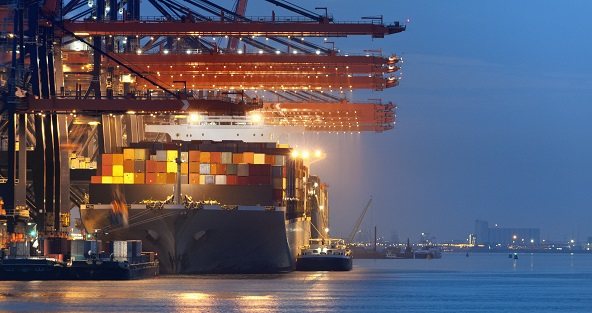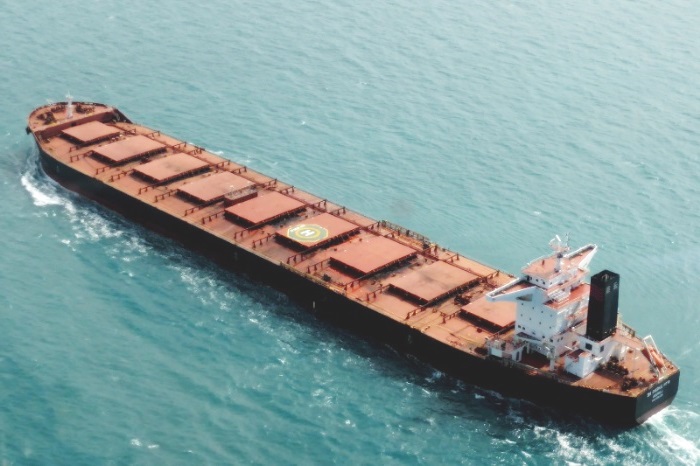Spot rates on the East-West routes are the most volatile; rates on intra-Asia routes the most stable. So, what are the implications for shippers?
More than five years have passed since the huge shipping disruptions, damaging port congestion and cost spikes of the Covid period, but one feature has remained: freight rate volatility.
Rate volatility has many causes, including external geo-political disruptions like the attacks on ships in the Red Sea, changes in the supply and demand balance and stop-and-go tariff changes (and the accompanying front-loading and pauses in shipping volumes) and higher vessel insurance or fuel costs when security risks rise in areas such as Iran and the Gulf region.
Transpacific rates from Asia to the US West Coast have been acutely volatile in the last six months, in the context of tariff announcements and sudden changes in both capacity and demand. Spot rates from Shanghai to Los Angeles halved between January and March, only to double between March and June.
For manufacturers, retailers, exporters and importers who are buying ocean transport under short, spot agreements, rate volatility means risk.
The risks:
Unexpected decreases or increases in landed costs for importers for the products which they shipped Negative margins on exports Less competitive exports in certain markets Top management will hold logistics executive responsible for logistics cost over-runs! This risk is more harmful for companies shipping low-value products, as an extra $2,000 in freight cost per container can kill the margin in such cases.
Even for shippers with annual contracts, who tend to be larger and better protected from cost changes from their vendors, we have seen a trend of more frequent unexpected surcharges (for example, Red Sea and ship deviation surcharges since late 2023).
And cost risks are especially high for shippers who have products shipped on the East-West routes.
The standard deviation for the Drewry East-West Freight Rate Index (a weighted average of spot rates on transpacific, Asia-Europe and transatlantic routes, both eastbound and westbound) was about $1,400 per 40ft container in the two years since May 2023.
It means that a spot-rate shipper exporting or importing on the East-West routes can find that, on average, a container shipment’s cost can vary by about $1,400. The shipper may not be prepared for such a large difference.
Proprietary market data from Drewry’s Container Freight Rate Insight also shows that spot-rate shippers on North-South routes (routes between the southern and northern hemispheres) are also exposed to material cost volatility – see table.
By contrast, intra-Asia spot-rate shippers have, on average, a much lower risk of cost volatility – seven times lower than East-West spot-rate shippers. Not only are intra-Asia rates much lower than East-West rates, but they are much more stable! Even during the Covid period, the Drewry Intra-Asia Container Index never exceeded $2,000/40ft container, whereas our Drewry East-West Freight Rate Index reached the crazy level of $11,000/40ft container. Does this explain partly why the intra-Asia trade is growing so much?
So, except for those fortunate intra-Asia shippers, there is a material freight cost risk for shippers on the East-West and North-South container shipping routes.
In Drewry’s opinion, shippers can and should prepare for this risk and try to mitigate it. Current discussions between Drewry consultants and shippers focus on established and emerging techniques such as:
Established techniques:
- Moving from spot agreement to more stable annual contracts with carrier or forwarder providers
- Building stronger relationships with ocean carriers, based on mutual commitments
- Reviewing carrier contract language to protect against unilateral carrier surcharges
- Using freight futures to hedge volatility risk in spot rates
- Obtaining/preparing freight rate forecasts and scenarios for the shipper’s top lanes (spot forecasts and contract forecasts)
- Reviewing the shipper’s sourcing locations and assessing new sourcing locations with lower logistics risks and/or lower tariff risks.
- Nobody can prepare for all eventualities, but Drewry believes that increased cost volatility in shipping – and the long-term trend to higher freight rates – deserve increased management attention and a review by shippers of established practices.




